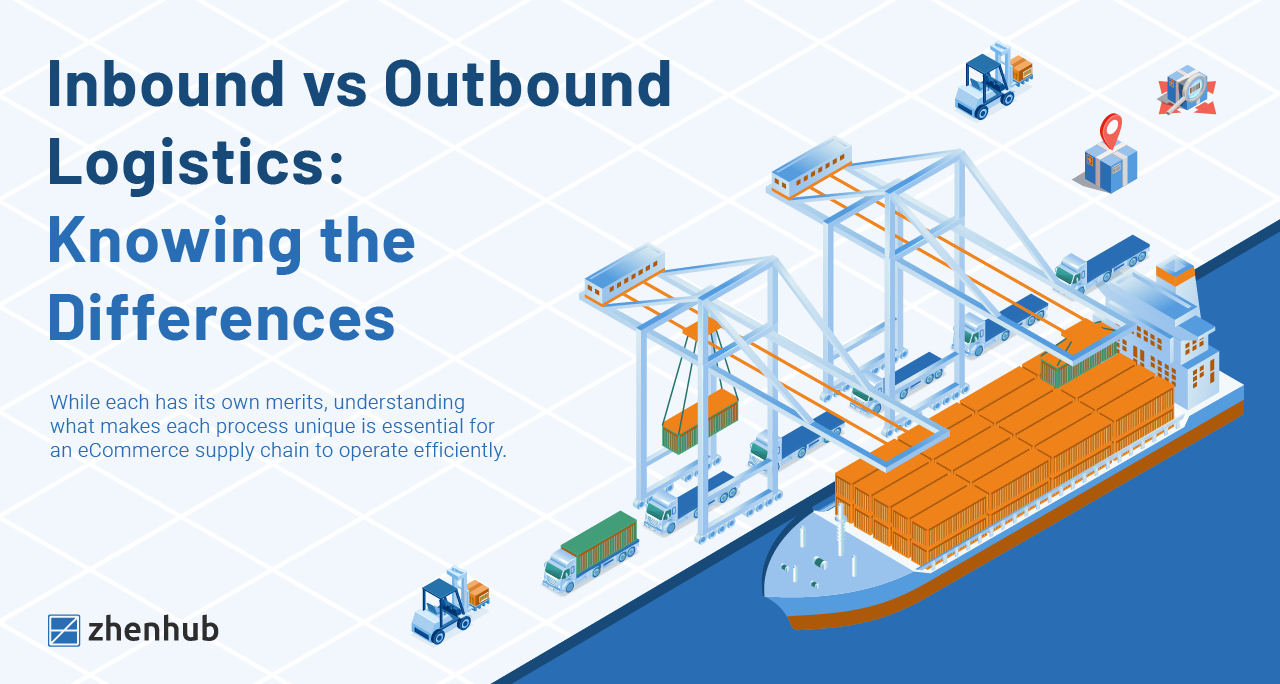
Inbound vs Outbound Logistics: Knowing the Differences
Time to read: 3 minutes
Logistics management is fundamental to the success of an eCommerce company. It’s a critical component to fast and smooth deliveries, and customers already expect this with online shopping.
One issue can affect customer loyalty to a brand. It’s so important that U.S. companies spent $1.63 trillion on logistics in 2019.
More than ever, knowing the intricacies of inbound vs outbound logistics can spell the difference between success and abject business failure.
All businesses that deal with physical goods, online or not, must thread that fine line to balance & manage inbound vs. outbound logistics. It’s crucial to ensure that inventory is up to par and deliveries are received by customers on time.
Inbound vs Outbound Logistics: The Definition
Both inbound and outbound logistics deal with the transportation of goods from the manufacturer to the customers. They are essentially two sides of the same coin.
- Inbound Logistics
Inbound logistics is essentially the movement of inventory from the supplier to the retailer’s location. As you well know, the stock can come in the form of raw materials, ready-to-ship products, and packing materials. Afterward, the manufacturers can deliver merchandise to a warehouse, a third-party logistics and fulfillment center, or a brick-and-mortar store, depending on the retailer’s business model.
- Outbound Logistics
On the other hand, outbound logistics is concerned with the flow of inventory to the customers. Products often originate from a warehouse or fulfillment center and are shipped to the buyers with a designated carrier.
Inbound vs Outbound Logistics: The Differences
The main difference between inbound vs outbound logistics lies in the endpoint for the products.
- Core Role
The main difference between inbound vs outbound logistics is their role in the supply chain. Inbound logistics involves sourcing raw materials or ready-to-ship products from suppliers. It also entails receiving the products, sorting through inventory, and decisively storing merchandise. Inbound logistics has a lot to do with building relationships with key players upstream.
The role of outbound logistics, on the other hand, is to direct merchandise to the consumers: it involves transportation, and shipping, and handling. With outbound logistics, the retailer deals with parties in the tail-end of the supply chain.
- Process
The process of inbound logistics entails coordinating with suppliers to meet the demands of the customers. It includes sourcing the products and securing storage and organization for the inventory. With outbound logistics, the process starts at a retailer’s warehouse. It involves sorting and packing as well as coordinating with carriers to deliver products to the end-user.
- Key Players
Manufacturers, suppliers, wholesalers, and warehousing management are integral in fulfilling the inbound logistics process. Delivery carriers and the end-users, in most cases buyers and customers, are the key players in outbound logistics.
The Inbound Logistic Process
The processes involved in inbound logistics can vary from industry to industry. However, for the most part, inbound logistics entail the following:
- Purchasing Raw Materials / Inventory
The first step in the inbound logistics process involves sourcing the products from the supplier or manufacturer. During this process, it is crucial for retailers to partner with a credible supplier to ensure that inventory is always good and arrives at the warehouse on time.
- Receiving Inventory
Receiving inventory might not seem like an essential step in the inbound logistics process. However, sorting through merchandise and hauling these from delivery trucks is a laborious and tedious process. Not only does this require a workforce, but it also entails an inventory management system that can help keep track of how many products arrived at a warehouse.
- Tackling Reverse Logistics
Aside from sourcing inventory and sorting through stocks, inbound logistics also tackle returns and exchanges, or what is commonly known as reverse logistics. Returned items need inspection before they go back to the list.
The Outbound Logistics Process
Similar to inbound logistics, the outbound logistic order fulfillment process can come in many forms. Below are a few common steps in the process:
- Processing Orders
The outbound logistics process starts when a customer places an order. For most retailers, the order details get sent through a warehouse management system. It goes to package queuing and then prepared for shipping.
- Sorting and Packing
Once an order comes up on the queue, the products get sourced from its warehouse location. All purchased items get collated into one package. The parcel is then labeled and prepped for carrier pick-up.
- eCommerce Shipping and Delivery
Carrier pick-up is the last step in the outbound logistics process.
Key Takeaways
The efficiency of the supply chain relies heavily on the harmony of the inbound vs outbound logistics process. Any problem at any step can impact delivery times and affect customer satisfaction. As an eCommerce operation, investing in a partnership with a credible third-party fulfillment provider is crucial in cultivating client loyalty.
If you are interested in learning the difference between inbound vs outbound logistics and the fulfillment process and which method best suits your business, ZhenHub is here to help. Sign up with us today to learn more about our technology-based products.